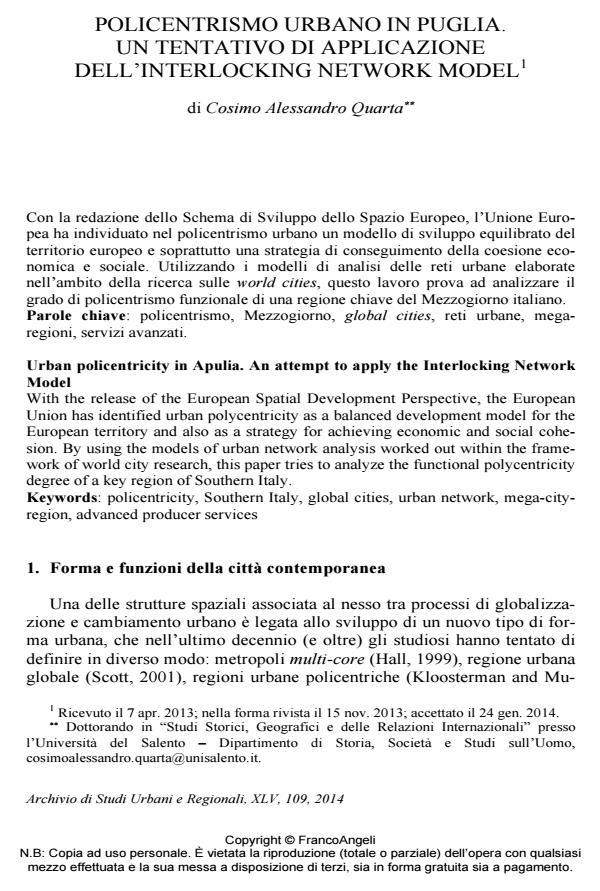Urban policentricity in Apulia. An attempt to apply the Interlocking Network Model
Journal title ARCHIVIO DI STUDI URBANI E REGIONALI
Author/s Cosimo Alessandro Quarta
Publishing Year 2014 Issue 2014/109
Language Italian Pages 26 P. 48-73 File size 205 KB
DOI 10.3280/ASUR2014-109004
DOI is like a bar code for intellectual property: to have more infomation
click here
Below, you can see the article first page
If you want to buy this article in PDF format, you can do it, following the instructions to buy download credits

FrancoAngeli is member of Publishers International Linking Association, Inc (PILA), a not-for-profit association which run the CrossRef service enabling links to and from online scholarly content.
With the release of the European Spatial Development Perspective, the European Union has identified urban polycentricity as a balanced development model for the European territory and also as a strategy for achieving economic and social cohesion. By using the models of urban network analysis worked out within the framework of world city research, this paper tries to analyze the functional polycentricity degree of a key region of Southern Italy.
Keywords: Policentricity, Southern Italy, global cities, urban network, mega-cityregion, advanced producer services
Cosimo Alessandro Quarta, Policentrismo urbano in Puglia. Un tentativo di applicazione dell’Interlocking Network Model in "ARCHIVIO DI STUDI URBANI E REGIONALI" 109/2014, pp 48-73, DOI: 10.3280/ASUR2014-109004